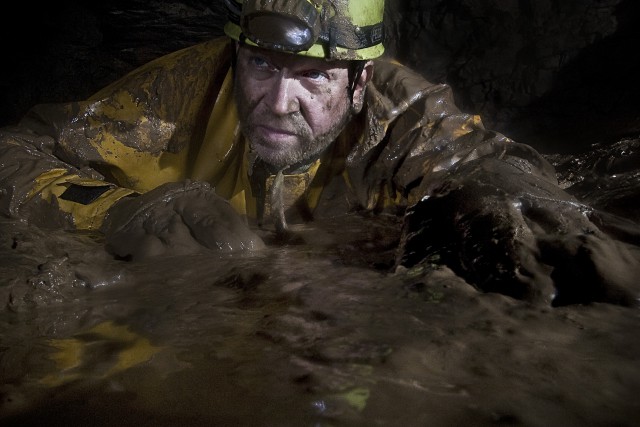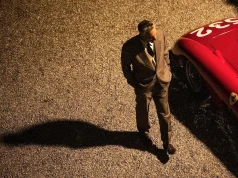
Somewhere in a Ukrainian cave, the film crew for No Place on Earth switched off their headlamps.
It was a request by 92-year-old Holocaust survivor Saul Stermer who, with every step, trekked deeper into his past. Director Janet Tobias slowly grew uneasy in the numbing darkness that shrouded the cave.
Five minutes robbed of eyesight was no big deal, but months? She couldn’t imagine it. But nearby, Stermer and his brother Sam Stermer both breathed sighs of relief.
“Saul said, ‘Ah, now I know where I am. Now I feel good,’” Tobias says. “They felt safety in the darkness actually. For them, the dark, dangerous place was outside because the world had turned upside down.”
The brothers are two of 38 Jews who hid in this cave system for 344 days during the Holocaust, which is the longest recorded underground survival in history. Screening at this year’s Boulder International Film Festival, No Place on Earth documents how these families fought to be among the 5 percent in the area who survived World War II.
An Emmy Award-winning director and producer who worked on shows like 60 Minutes and Dateline NBC, Tobias was eager to return to her storyteller role after a break in her career. However, when a friend from PBS told Tobias about this story, she initially said no. There had been too many Holocaust films, and too many had been done extraordinarily well. But soon, Tobias realized this story was something special.
“My friend said, ‘You’ve got to meet Chris Nicola and the family that’s still alive,’” Tobias says. “I did both things and I said, ‘Darn, you’re right. This is one of the best stories I’ve ever seen.’”
The story may have never been uncovered if it wasn’t for cave enthusiast Nicola. During a 1993 expedition to map Ukraine’s Gypsum Giant cave system, he stumbled upon buttons, remnants of walls, cookware, children’s shoes and a host of other objects that didn’t belong in a cave. For the next nine years of his life, Nicola tirelessly searched for an answer to the mysterious riddle he found in the cave.
Using a genealogy website, Nicola discovered several survivors living in the U.S. and Canada, many of whom are part of the Stermer family. Though the family’s matriarch, Esther Stermer (now deceased), wrote a memoir called Fight to Survive, her book only received a small distribution and never became well known. Besides this account, Tobias says that survivors kept the experience within the family.
“In a new country when you have to learn a new language and support your family, and when in many cases you’re around other survivors who have lost everyone, you don’t want to sit around saying you had done something extraordinary,” Tobias says. “It wasn’t until more recently that they were able to talk.”
With the chance to tell the Stermers’ story, Tobias decided that re-enactments, combined with interviews with survivors, was the best way to help audiences understand their ordeal. This meant that the crew and Hungarian actors braved the cold in Slovakian and Hungarian caves. Tobias says she couldn’t afford to be a beginner caver for very long.
“A Hungarian tourist cave is not a U.S. tourist cave,” Tobias says. “You had to crawl about 70 feet through narrow, winding descending passages, and we had to bag all equipment and wedge it through. I had been in caves before but I had never been caving in this sense.”
But the biggest challenge by far was taking several survivors, now ranging in age from their 70s to their 90s, back to their original cave in Ukraine. Tobias says they had to take precautions when shooting this part of the film.
“Bringing older people in a cave actually required us to bring construction crews, a whole caving team, a safety rescue team with cavers and climbers,” Tobias says. “If anything happened you had to get them out.”
The film is undoubtedly a Holocaust film, but for Tobias, it’s more than that. It’s a story about two brothers who risked their lives to gather supplies with the other men, and about the strong women who worked by candlelight to make a home for the children and elderly. Even in the blackness of a cold cave, Tobias says the story is about the prevailing comfort found in human connection.
“The film made me realize that we are all better as a group,” Tobias says. “We can accomplish so much more when we do things together.”
No Place on Earth will play at 3 p.m. Feb. 17 at the Boulder Theater. See www.biff1.com for more information.
This story is part of our complete coverage of BIFF 2013.
Respond: [email protected]














